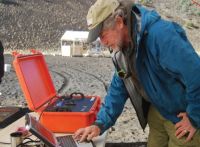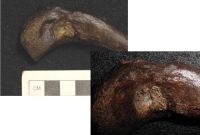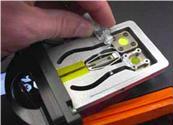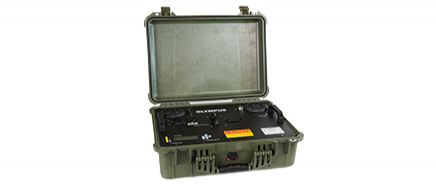Overview
For years crime scene evidence has been analyzed using X-ray fluorescence (XRF) and diffraction (XRD) technologies, as well as other analytical techniques, to support the prosecution of criminals. Qualitative and quantitative analyses can be of equal importance in gathering this evidence. Most crime scene scientific analysis are limited to laboratory work. As a result, the integrity of the evidence must be maintained while it is transported to a lab and then analyzed, always following the chain of custody.
Portable XRF and XRD are critical for field investigations of crime scenes. Portable XRF aids in the identification of clandestine methamphetamine drug labs; counterfeit supplements and tobacco; bullets, casings, fragments and gunshot residue; incinerated human bone and dental fragments; and human remains soil transfer. Portable XRD aids in the identification of counterfeit pharmaceuticals; explosives, fusing materials and accelerants and other hazardous materials.
Today, Crime Scene Investigators can analyze evidence on the spot without transporting, altering, or damaging the evidence by using portable XRF and XRD from Olympus. These investigative tools provide the performance, portability and versatility required for on-the-spot crime scene investigations to help prove findings in a court of law.
On-the-Spot Proof: ID of Phosphorus and Iodine at "Kitchen Clan Labs"
Two "proof" ingredients that identify "Kitchen Clan Labs" are the red phosphorus and iodine used in the manufacturing process. These two elements are critical to the production of methamphetamines and are typically found in the residue of coffee filters - or in the colorful stains on the walls where open container vaporization or "cooking" have occurred. An investigator can state that these elements are present because they can see them. However, conclusive, scientific data is needed to prove it. The DELTA Handheld XRF is capable of identifying phosphorus at levels as low as 500 parts per million (PPM) and iodine at levels as low as 20 PPM, both well within the concetrations used by methamphetamine production.
Smoking Gun? On-the-Spot ID of Pb, Cu, Sb, Ba and More
One of the first recordings of the actual use of gunpowder in Europe was in Seville during the 11th Century. By the 1300s, cannons and handguns were known throughout Europe.
The manufacture of guns, gunpowder, bullets and casings has advanced over the years and their use continues to increase with the growth in population and availability of guns.
When an investigator is called to the scene where a gun has been fired, a myriad of techniques and procedures are utilized to follow each bullet's path and determine its source.

Elemental analysis is needed to identify and compare the composition of the projectile lead, copper/zinc jacket alloys, other metals and gunshot residue (GSR). Analysis of the controlled and uncontrolled trace elements in the lead can help trace the bullet manufacturer. Only a few copper/zinc alloys are used to manufacture all bullet jackets, but their analysis can still help to differentiate the manufacturer. Alloy sorting of other metals, such as copper wire, steel and aluminum, used by manufacturers for specific end-use properties can also help determine the source of a bullet.
The discharge of a firearm causes vaporous and particulate materials, gunshot residue (GSR), to be expelled. Barium, antimony and lead are the major elemental ingredients of most cartridge primer mixtures. GSR can be found on people, clothing, walls, floors, glass, carpet or any other material in the area surrounding the discharge of a firearm, thus determining a bullet's path.
Lead, copper, barium, antimony and other elements are very simple to analyze with handheld XRF analyzers. Detection limits for these elements are at the low PPM level.
Identification through Human Bone and Dental Fragments
Portable XRF is used by forensic anthropologists to identify human bone and dental fragments for strontium (Sr) ratios, an indicator of the origin and final location of a human. It has been used to help in the identification of incinerated victims by analyzing unique dental filler materials left behind. Portable XRF is also used to identify foreign metallic objects in skeletal remains.
 Explosives, Fusing Materials & Accelerants ID
Explosives, Fusing Materials & Accelerants ID
The TERRA Portable XRD rapidly identifies dangerous hazardous materials on-site. It is used to ID and quantify suspected HAZMAT's including azide's PETN; black powder's KClO3, KClO4 and KNO3; flash powder's KClO3; and cascandite.
Screen for Counterfeit Pharmaceuticals
XRD tests for the presence and quantity of active and inactive, foreign or substitute pharmaceutical ingredients. The TERRA Portable XRD performs fast, non-destructive fingerprinting of drug formulations and precursors. XRD screening helps to ensure patient safety and safeguards legitimate pharmaceutical manufacturers' products and branding.






